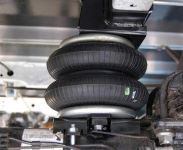
Air Suspension - different types
Air suspension systems for motorhomes and vans offer superior ride comfort, adjustability, and load-leveling capabilities compared to traditional steel spring suspensions. These systems use airbags to support the vehicle's weight and provide a smoother ride. Here are the common types of air suspension systems for motorhomes and vans:

In a full air suspension system, airbags completely replace traditional steel springs on all axles of the vehicle. This design provides the most flexibility and adjustability in terms of ride height and comfort. It is commonly found in high-end motorhomes and luxury vans. These systems often come with electronic controls that allow for precise adjustment and automatic leveling.
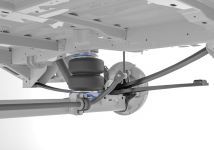
In a full air suspension system, airbags completely replace traditional steel springs on all axles of the vehicle. This design provides the most flexibility and adjustability in terms of ride height and comfort. It is commonly found in high-end motorhomes and luxury vans. These systems often come with electronic controls that allow for precise adjustment and automatic leveling.
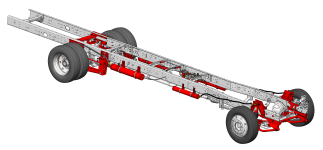
Four-corner air suspension systems have airbags on both the front and rear axles. This design provides more balance and even weight distribution, resulting in better ride quality and stability. Four-corner systems can be adjusted individually for precise leveling.
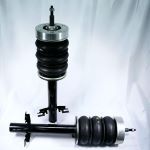
Some high-end motorhomes and luxury vans feature an independent front suspension system, which includes airbags. IFS systems provide a smoother and more responsive ride by allowing each front wheel to move independently, adapting to road conditions.

Many manufacturers offer air suspension systems as optional upgrades when purchasing a new motorhome or van. These systems are integrated into the vehicle's design and may come with advanced controls and features.
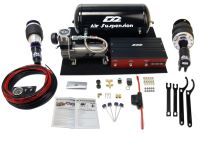
If you want to retrofit your existing motorhome or van with air suspension, there are various aftermarket kits available. These kits typically include airbags, air compressors, controls, and all necessary hardware for installation. They can be a more affordable way to enjoy the benefits of air suspension.
Pros:
Pros:
Increased Load Capacity:
One of the most significant advantages is the ability to carry a larger payload. This can be particularly valuable for longer trips, group travel, or if you need to bring along more supplies, equipment, or amenities.
Greater Comfort:
With the added capacity, you can enjoy a more comfortable living space by bringing along extra furnishings, appliances, or other conveniences that might otherwise be restricted by weight limits.
Longer Trips:
You can plan longer trips without the need for frequent resupply stops. This is especially beneficial for those who want to explore remote areas or travel for extended periods.
Flexibility:
You gain greater flexibility in how you use your motorhome. You can customize it to suit your specific needs without worrying about exceeding the weight limit.
Safety:
Cons:
Regulatory Considerations:
Uprating your motorhome may involve legal and regulatory requirements. In some regions, a license upgrade or additional vehicle inspections may be necessary. You must comply with local laws regarding vehicle weight and dimensions.
Cost:
The process of uprating can be expensive. It may involve modifications to the vehicle, such as suspension upgrades, larger brakes, or even engine enhancements to ensure it can handle the added weight safely.
Fuel Efficiency:
A heavier motorhome is likely to have decreased fuel efficiency. This can lead to higher operating costs, both in terms of fuel expenses and maintenance, as the vehicle will experience more wear and tear.
Driving Challenges:
A heavier motorhome may be more challenging to drive, particularly in terms of maneuverability, braking distances, and overall handling. Drivers need to be more cautious and experienced.
Environmental Impact:
A heavier motorhome typically has a larger carbon footprint due to increased fuel consumption and emissions. If you are environmentally conscious, this might be a concern.
Resale Value:
While a higher weight rating can increase the practicality of your motorhome, it may not necessarily enhance its resale value. Potential buyers may have concerns about higher operating costs and driving challenges.
Parking Restrictions:
In some regions, there are parking restrictions for vehicles over a certain weight limit. A heavier motorhome may limit your options for parking and overnight stays.
Before uprating your motorhome, it's crucial to carefully evaluate the pros and cons, considering your specific travel needs and circumstances. Additionally, consult with local authorities and follow the appropriate legal and safety guidelines to ensure that your motorhome remains compliant with regulations and safe to operate.
Cons:
In summary, air suspension systems offer significant advantages in terms of ride comfort, load leveling, and adaptability. However, they come with higher upfront costs, maintenance complexities, and potential reliability issues. When considering air suspension, it's essential to weigh the benefits against the costs and consider your specific needs, usage, and budget.
How does it all work?
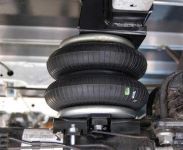
Air suspension systems work by using compressed air to support the vehicle's weight and adjust its ride height. These systems consist of various components that work together to provide a smoother and more adaptable ride. Here's how air suspension typically works:
Air Springs (Airbags):
Air springs, also known as airbags, are the fundamental components of an air suspension system. They are located at each wheel or axle and replace traditional coil or leaf springs. These air springs are made of heavy-duty rubber or reinforced plastic and have a flexible, bladder-like structure.
Air Compressor:
An air compressor is responsible for generating compressed air, which is used to inflate and maintain the air springs. The air compressor may be powered by the vehicle's engine or an electric motor. It continually monitors and maintains the air pressure in the system.
Air Reservoir:
An air reservoir or tank stores compressed air to ensure a constant and immediate supply. This reservoir can provide extra air pressure if the compressor fails or when rapid adjustments are needed.
Air Lines and Valves:
Air lines, or hoses, connect the air springs, air compressor, and air reservoir. Control valves regulate the flow of air in and out of the air springs. These valves allow adjustments to the air pressure within the air springs, which, in turn, affect the vehicle's ride height and stiffness.
Control System:
An electronic control system manages the air suspension. Depending on the system's complexity, it can be manually controlled by the driver or feature automatic leveling and adaptive settings. The control system monitors various parameters, such as vehicle speed, weight distribution, and road conditions, to make real-time adjustments.
Here's how the process typically works when using air suspension:
When the vehicle is stationary or parked, the air suspension system can level the vehicle by adjusting the air pressure in each air spring. This feature is particularly valuable for motorhomes and campers, ensuring a level living space.
When the vehicle is in motion, the control system continuously monitors the road conditions and the vehicle's weight distribution. If the system detects an uneven road or a heavy load, it can adjust the air pressure in individual air springs to maintain a level ride height and improve ride comfort.
The control system can also provide an adjustable ride. By altering the air pressure in the air springs, the vehicle's ride stiffness can be customized. For instance, drivers can select a more comfortable setting for highway cruising or a firmer setting for better handling on twisty roads.
Overall, air suspension systems provide a smoother and more adaptable ride compared to traditional steel spring suspensions. They are especially valuable in applications where load leveling and comfort are crucial, such as motorhomes.

